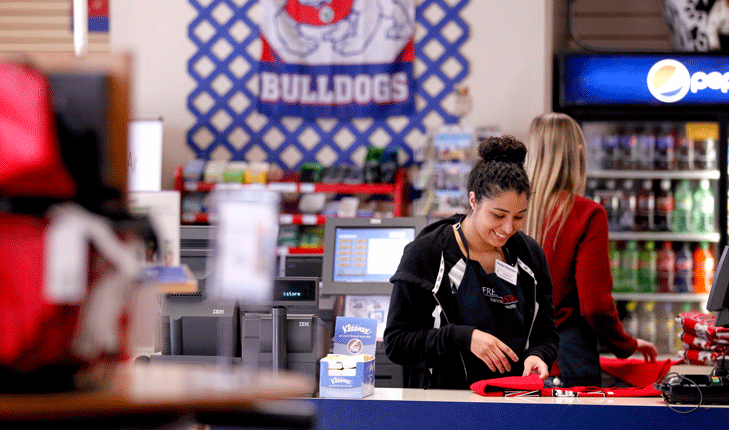Getting that special toy at the top of your niece’s wish list may be a little challenging this holiday season, according to Dr. Keith Story and Hai Ying Zhang of the Craig School of Business at Fresno State. The lingering effects of the COVID-19 pandemic and its disruption of supply chains continue to create problems for both consumers and retailers.
Story, an assistant professor of marketing and supply chain management, and Zhang, a lecturer in global marketing and retail management, are experts in retail on a global scale. In addition to teaching at Fresno State, both have worked in international marketing for major corporations.
“Shoppers should expect a more limited supply and more limited variety of items this holiday season,” Story said. “Currently there is quite a bit of congestion in getting materials from producers to consumers. Seasonal holiday items are particularly vulnerable to delays. Forecasts of production runs for holiday items are made many months in advance, and the plans of many firms were disrupted by the scaling back and shutdown of production and distribution capability due to the pandemic.”
Delays and limitations in holiday goods are an annoyance to consumers, but for retailers, not making holiday sales targets means a painful hit in profitability. “Holiday sales in November and December have averaged about 19% of annual retail sales over the last five years, and that number can be even higher for some retailers,” Zhang said. “Jewelry, electronics, sporting goods, clothing and toys are some of the most popular Christmas gifts year after year, and retailers of these items are more reliant on holiday sales.”
To work around supply delays, both shoppers and retailers are starting the holiday shopping season earlier than ever, boosting a pre-pandemic trend. “Each year about 40% of consumers begin their holiday shopping before Halloween. This year both retailers and consumers have started even earlier. Retailers are stocking their holiday merchandise earlier to ensure they have inventory, and 61% of consumers started holiday shopping by early November this year, compared to 59% in 2020 and 56% in 2019,” Zhang said.
Story said while delays may be worse this year, there is typically a scarce supply of some popular items during the holiday shopping season. “Even before the pandemic, unexpected demand levels or insufficient production capability contributed to some people having to wait for their most-desired items. It will just be more salient this year for consumers because the supply chain has become such a popular catch-all for any issues related to supply-demand imbalances. Many of the items that people want have been produced and are waiting to be sent to distribution points,” Story said.
Story added that supply chain issues will eventually ease. “Things are easing in various channels, albeit slowly. It will take a bit of time and patience for the system to come back online after being scaled back considerably due to the pandemic. There are interventions, adjustments and new capabilities being introduced that will get items onshore and out to distribution points. I think consumers will be surprised how quickly more items will become available,” Story said.
But while the results of holiday shopping may be unpredictable this year, the motivation for giving gifts is timeless. “When we give gifts, it not only brings joy to the receiver, but also makes us feel good,” Zhang said. “We give gifts as a way of showing thoughtfulness, affection and love.”





